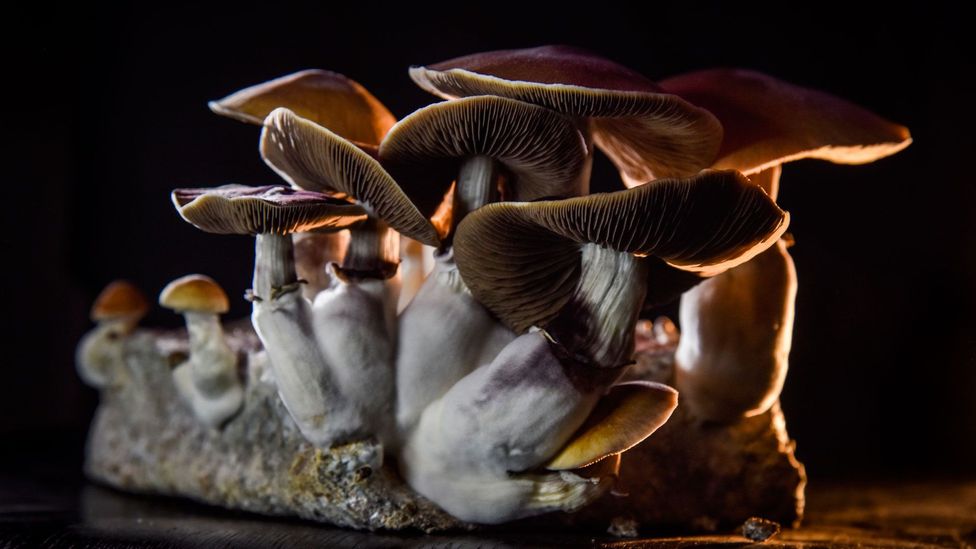Scientists have sequenced the genome of Psilocybe cubensus, a fungus living in the waste of herbivores of large size. It can be located in a broad range of habitats such as subtropical grasslands in Africa as well as South America as well as subtropical and tropical grasslands across Thailand, Australia, South America, South America, South America, South America, South America, and Africa. The blue coloration of the species is the result of oxidation.
The psychedelic effects of Psilocybe cubensi are often associated with a high sense of well-being. Many individuals enjoy the psychedelic experience, while some find the trip profound and psilocybin mushroom spores meaningful. Diverse cultures from all over the world have used psilocybe cubensis for medicinal purposes, and research is currently underway to find how best to consume this fungus to reap the maximum advantages.
Psilocybe Cubensi can easily be identified by its golden color that is a sign of its high hydration levels. The color will become bluish as it ages due to it oxidizes when exposed oxygen. Psilocybe cubensis is one of the largest and most commonly consumed magical mushrooms. However, it is not recommended for those who are allergic to mushrooms.
Psilocybe cubensi is the easiest mushroom to grow indoors. It grows on several substrates, including PF tek. The fungus produces psilocybin mushroom spores for sale, an extremely popular hallucinogen. Various strains of P. cubensis can be found in various colors and shapes. However, only a specific strain produces the highest psychoactive substance.
Psilocybe Cubensus’s potency can vary drastically. It’s challenging to recognize the species and the appropriate dosage. Many people like using Psilocybe cubensis for their potency and its easy cultivation. This species grows in humid, warm environments in rich nutrient-rich dung. So, if you are looking to experience the numerous advantages that Psilocybe cubensis provides Give it a go!
The most commonly used kind of Psilocybe cubensi is called the liberty cap. The gills of this species are small, grey, and sometimes darkerened to black. The stipe is found in rich soil that is 0.4-1.35 millimeters in thickness. The liberty cap mushroom is an common European species. Apart from its power, this fungus is often cultivated in indoor spaces.
Psilocybecubensi is the natively found Costa Rican Cubensis mushrooms. It grows in warmer climates than those found in the United States. This variety can be difficult to cultivate in some conditions. The cap of this mushroom is brown , Web while its secondary veil is prone to tear away at maturity. Some users consider it to be low-potency, however, experiences differ.
Derrumbe mushrooms are another type of Psilocybe. It’s distinguished from other species due to its diminutive stem and silvery blue metallic shine. Derrumbes are low- to moderately potent. The journey can last between three to six hours. It’s often a fantastic introduction to magic mushrooms however may disappoint those who have already tried Psilocybe cubensis.
Although cultivating psilocybin mushrooms is considered illegal, they can be found in dispensaries, and a dispensary may eventually allow the cultivation of the Psilocybe cubensus species. As of the moment, cultivation of psilocybe cubensis mushrooms has been legalized in various states. The legal states include Georgia and Idaho.
Penis Envy, a potent strain P. cubensis can be grown in numerous ways to produce edible marijuana. Though it’s more widely used than other strains, it is one of the most popular in the United States. Alacabenzi has a strong psychoactive effect, and has been widely known for centuries. This strain is also challenging to cultivate, and could be extremely expensive.
 The mushroom was used in a study that sought to determine the effect of tumor necrosis factors a and endothelin-1 in relation to cell growth. The mushrooms were dried in the oven and extracts prepared by boiling cold water. TNF-a and endothelin-1 were used to cause cell damage and hypertrophy in cardiomyocytes of H9C2. In the study, both extracts protected cardiomyocytes from cell death caused by TNF.
The mushroom was used in a study that sought to determine the effect of tumor necrosis factors a and endothelin-1 in relation to cell growth. The mushrooms were dried in the oven and extracts prepared by boiling cold water. TNF-a and endothelin-1 were used to cause cell damage and hypertrophy in cardiomyocytes of H9C2. In the study, both extracts protected cardiomyocytes from cell death caused by TNF.
 The ET-1 treatment dramatically increased the amount of ROS in cells stimulated by ET-1. When the ET-1 drug was administered to the ET-1-treated cells, the extracts from P. cubensis and P. Cyescens significantly decreased the production of ROS. TNFa levels and cell proliferation induced by cytokine were significantly decreased by extracts of hot water from Pan Cyescens as well as P. cubensis.
The ET-1 treatment dramatically increased the amount of ROS in cells stimulated by ET-1. When the ET-1 drug was administered to the ET-1-treated cells, the extracts from P. cubensis and P. Cyescens significantly decreased the production of ROS. TNFa levels and cell proliferation induced by cytokine were significantly decreased by extracts of hot water from Pan Cyescens as well as P. cubensis.
The mushrooms are home to a fungus called psilocybin. This fungus hinders the production of endothelin-1, a vital hormone for myocyte hypertrophy. The effects of psilocybin on the psilocybe mushroom are extremely rare and they are thought to be self-limiting. There is only one case of a man aged 15 suffering from acute symptoms of kidney injury after ingestion of the mushroom. The young man, age 15 was a buyer of a mushroom grow kit. He shared the harvest with three of his acquaintances. After 6 hours, the hallucinatory effects faded away.